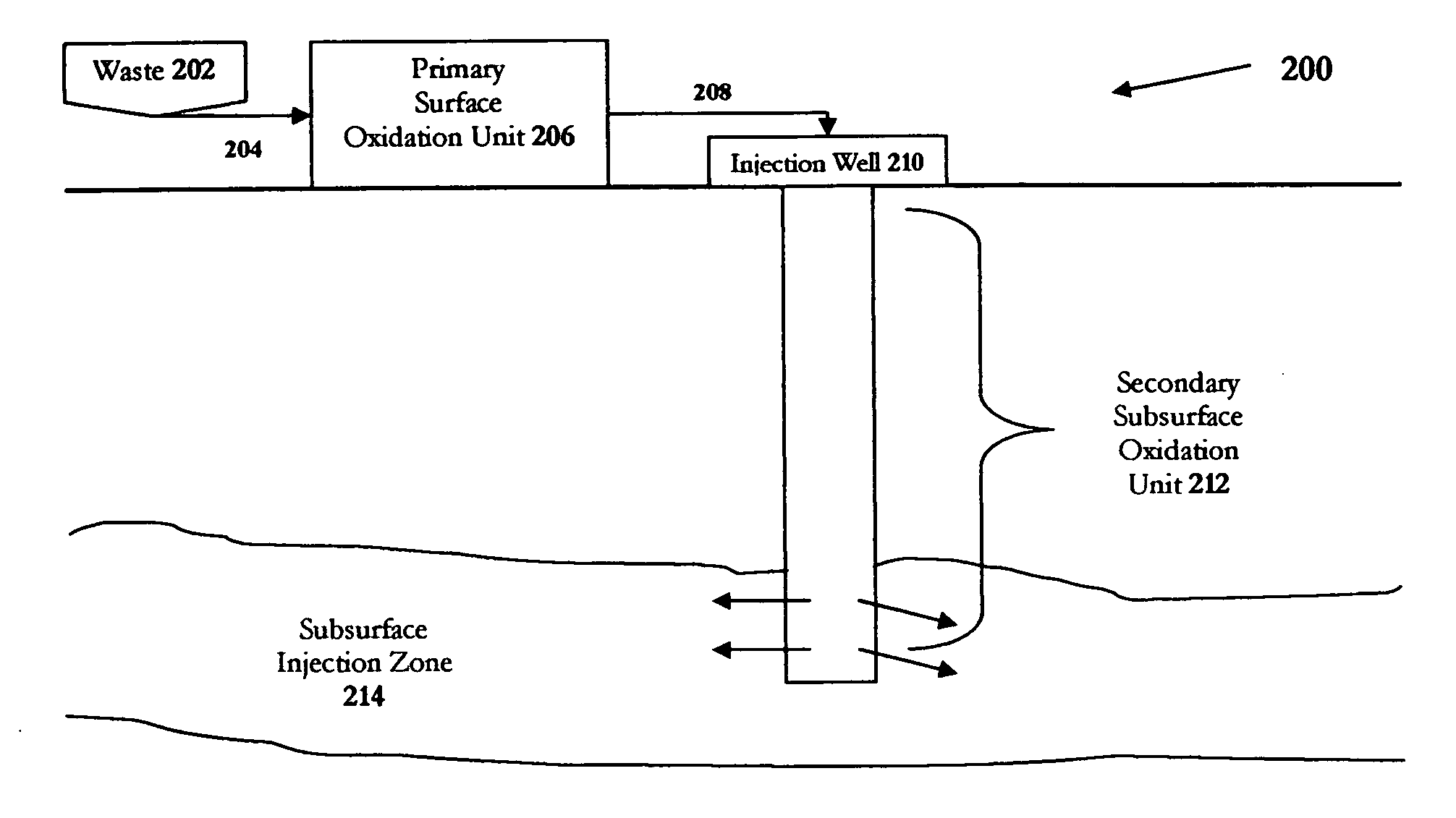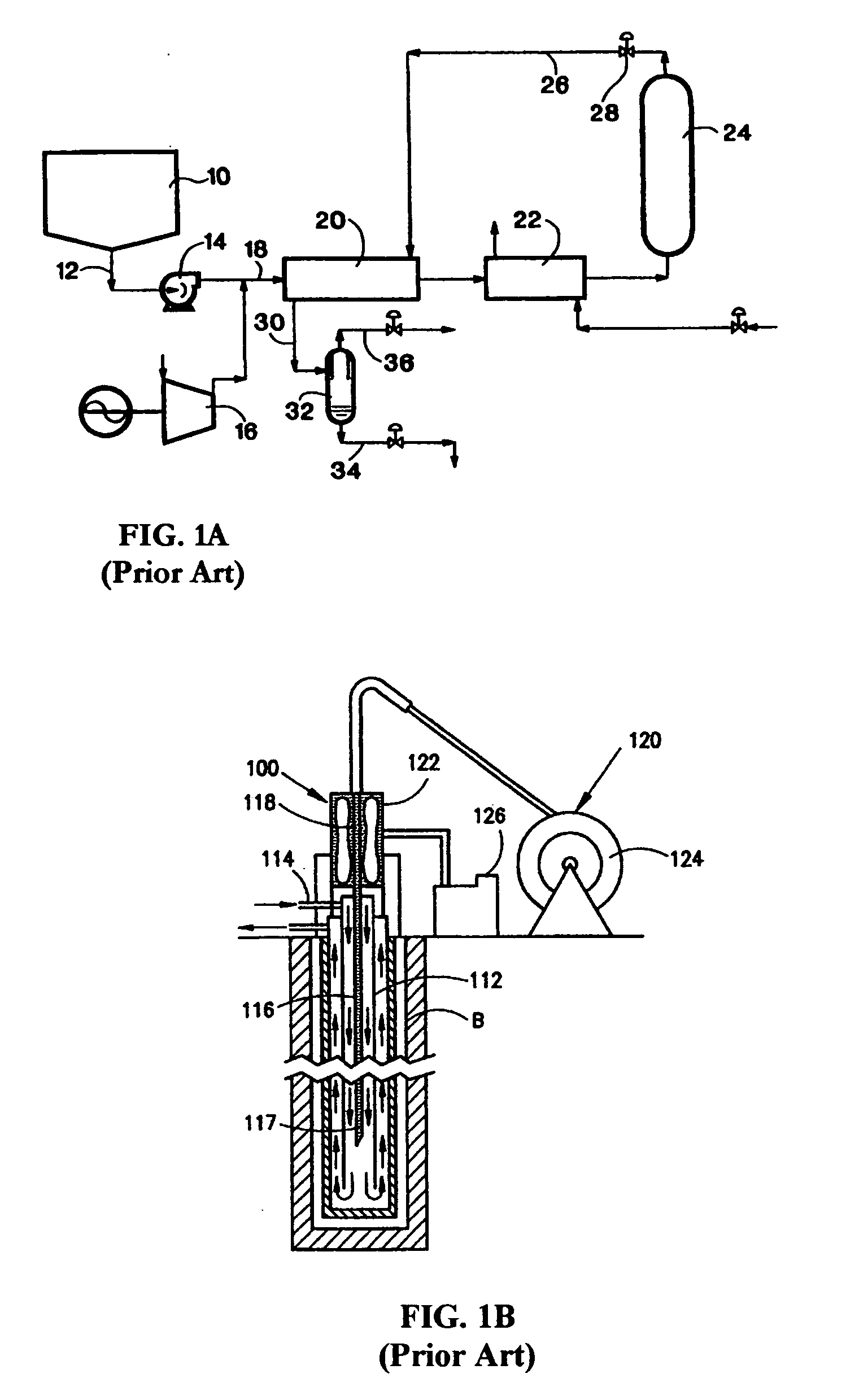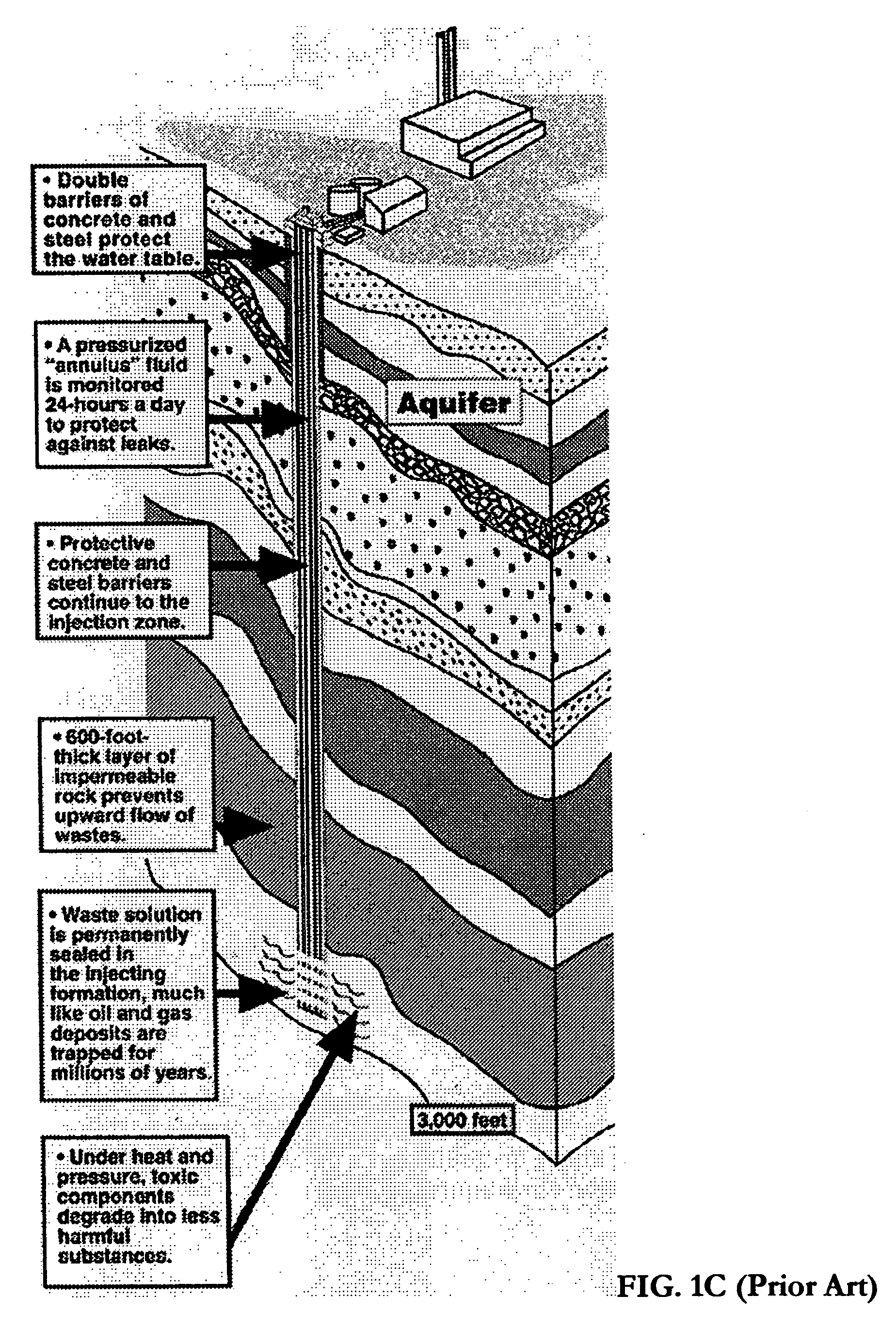Waste disposal method and apparatus using wet oxidation and deep well injection
a technology of deep well and waste disposal method, which is applied in the direction of sludge treatment, water/sludge/sewage treatment, chemistry apparatus and processes, etc., can solve the problems of limited application of supercritical wet air oxidation, wastes injected into these reservoirs degrading into non-hazardous components, etc., and achieves the effect of improving the capacity of wao units to handle was
- Summary
- Abstract
- Description
- Claims
- Application Information
AI Technical Summary
Problems solved by technology
Method used
Image
Examples
example 1
[0084] Dietrich, et al., Environmental Progress, Vol. 4, No. 3, (Aug. 1985) shows that toluene at a starting concentration of 0.433% can be oxidized at 275° C. for 60 minutes to a 99.7% destruction to a final concentration of 0.0012%. It is reasonable to assume that 0.0012% is also the maximum desired limit of concentration of toluene in waste water. However, the toluene solubility limit in water is 0.05%. Assuming a first order equation where the rate equation is
−d[R] / dt=k[T],
where [T] is concentration of toluene at any time and k is the reaction rate constant. This assumption can be made if oxygen is assumed to be in large excess and its concentration in the liquid phase is effectively not changing near the end of the reaction. As such, then, the reaction time can be solved from an equation:
kt=ln([To] / [T])
where [To] is the initial concentration of toluene. For purposes of comparison, [To] is a constant. Then, the reaction time to reach soluble concentration shall be 2.8 time...
example 2
[0085] Emulsions containing high levels of heavy hydrocarbons would tend to have similar filtration rates to mineral oil slurries. After wet air oxidation, the organics would be degraded to low viscosity water-soluble species and the filtration rates would resemble those for water with small amount of solids. Examination of filtration rates in a filter press shows:
Average rate,Material Filteredgal / min / ft2Water with small amount of solids60-120Mineral oil20-40
Perry's Chemical Engineers' Handbook, Fifth Edition, 1973, pp. 19-67.
[0086] A preferred embodiment of the present invention teaches an integration of WO / WAO with deep well injection resulting in increased processing rates of WO / WAO. Ranges mentioned above and pertaining to oxidation conditions, deepwell geometry, etc., are merely exemplary of preferred embodiments of the invention and are not intended to limit the invention.
[0087] Based on the foregoing teachings, it will be apparent that numerous permutations of the prese...
PUM
| Property | Measurement | Unit |
|---|---|---|
| temperature | aaaaa | aaaaa |
| temperature | aaaaa | aaaaa |
| pressure | aaaaa | aaaaa |
Abstract
Description
Claims
Application Information
 Login to View More
Login to View More - R&D
- Intellectual Property
- Life Sciences
- Materials
- Tech Scout
- Unparalleled Data Quality
- Higher Quality Content
- 60% Fewer Hallucinations
Browse by: Latest US Patents, China's latest patents, Technical Efficacy Thesaurus, Application Domain, Technology Topic, Popular Technical Reports.
© 2025 PatSnap. All rights reserved.Legal|Privacy policy|Modern Slavery Act Transparency Statement|Sitemap|About US| Contact US: help@patsnap.com



